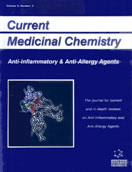Abstract
A wide distribution of tachykinin-containing projections of capsaicin-sensitive primary afferent neurons is present in the peripheral organs of respiratory, gastrointestinal and genitourinary systems. Tachykinins, along with calcitonin gene-related peptide (CGRP) and other neuropeptides, can be released by adequate stimuli having pathological rather than physiological relevance. In most cases these stimuli are represented by chemical irritants penetrating through the respiratory tree or alimentary channel to the body, or being removed through the urinary system. Tachykinins produce in the visceral organs part of the responses obtained at somatic level by antidromic activation of capsaicin-sensitive nerve terminals and known as “neurogenic inflammation” that is, increase in vascular permeability and plasma protein leakage followed by oedema. In addition tachykinins produce at visceral level smooth muscle contraction, neuronal stimulation, mucus secretion and recruitment / activation of immune cells. The physiological significance of these effects is to afford protection toward chemical irritants or noxious stimuli by facilitating their removal from the body. Nonetheless, a large body of preclinical evidence exists indicating that tachykinins participate in the genesis and/or maintenance of symptoms accompanying various human diseases, such as asthma / bronchial hyperreactivity, cystitis of various aetiologies, inflammatory bowel diseases and irritable bowel syndrome. Tachykinin receptor antagonists, proved capable of preventing/reducing tachykinin-mediated effects in experimental animal models of these pathologies, are expected to afford therapeutically relevant effects in humans.
Keywords: capsaicin, neurogenic inflammation, neuropeptides, substance p (sp), tackykinin(s), tackykinin receptors
 2
2

